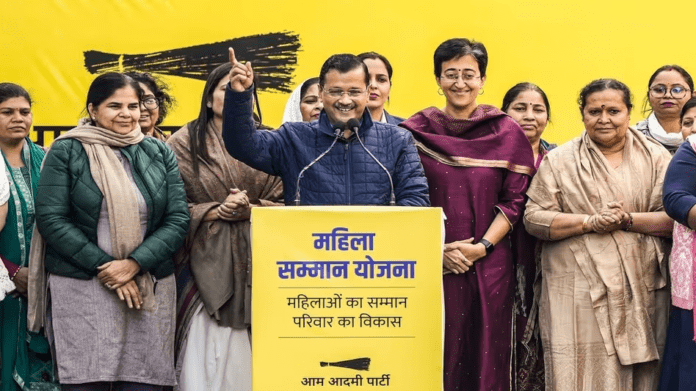परिचय
होलिका दहन, जिसे छोटी होली भी कहा जाता है, बुराई पर अच्छाई की जीत का प्रतीक है। यह होली के त्योहार की पूर्व संध्या पर मनाया जाता है और धार्मिक रूप से अत्यंत महत्वपूर्ण है।
होलिका दहन 2025 इस वर्ष 13 मार्च को मनाया जाएगा, जबकि रंगों की होली 14 मार्च को खेली जाएगी। इस लेख में हम होलिका दहन का इतिहास, महत्व, अनुष्ठान और शुभ मुहूर्त विस्तार से जानेंगे।
होलिका दहन 2025 की तिथि व शुभ मुहूर्त
हिंदू पंचांग के अनुसार, पूर्णिमा तिथि पर होलिका दहन किया जाता है। 2025 में होलिका दहन का शुभ मुहूर्त इस प्रकार रहेगा:
🕖 होलिका दहन का समय: (स्थानीय पंचांग के अनुसार अपडेट करें)
🌕 पूर्णिमा तिथि आरंभ: 13 मार्च 2025
🌕 पूर्णिमा तिथि समाप्त: 14 मार्च 2025
प्रदोष काल के दौरान होलिका दहन करना शुभ माना जाता है, जब चंद्रमा पूर्ण रूप से दिखाई देता है।
होलिका दहन की पौराणिक कथा
होलिका दहन का संबंध प्रह्लाद और होलिका की पौराणिक कथा से जुड़ा हुआ है:
🔸 हिरण्यकशिपु, जो एक अहंकारी राजा था, चाहता था कि सभी लोग उसे भगवान मानें, लेकिन उसका पुत्र प्रह्लाद भगवान विष्णु का भक्त था।
🔸 राजा ने अपनी बहन होलिका, जो अग्नि से न जलने वाला एक जादुई वस्त्र धारण किए थी, से प्रह्लाद को आग में जलाने के लिए कहा।
🔸 लेकिन भगवान विष्णु की कृपा से प्रह्लाद सुरक्षित रहे और होलिका जलकर भस्म हो गई।
यह घटना हर साल बुराई के अंत और भक्ति की विजय के प्रतीक रूप में होलिका दहन के रूप में मनाई जाती है।
होलिका दहन की परंपराएँ और अनुष्ठान
होलिका दहन को पूरे भारत में बड़े हर्षोल्लास से मनाया जाता है। इसकी परंपराएँ इस प्रकार हैं:
1. लकड़ी और होलिका दहन की तैयारी
खुले स्थान पर लकड़ी, सूखे पत्ते और गोबर के उपले एकत्र कर अलाव (होलिका) बनाई जाती है। कुछ स्थानों पर होलिका की प्रतिमा भी स्थापित की जाती है।
2. पूजन और अर्पण (पूजा विधि)
🙏 तिलक और मंत्र: लोग होलिका दहन से पहले पूजा करते हैं, माथे पर तिलक लगाते हैं और शुभ कामनाएँ करते हैं।
🌾 धान्य अर्पण: गेहूं, जौ और नारियल को अग्नि में अर्पित किया जाता है, जिससे इसे समृद्धि और नई फसल के आगमन का प्रतीक माना जाता है।
📿 परिक्रमा: भक्तजन अग्नि की परिक्रमा (3 या 7 बार घूमना) कर सुख-समृद्धि की कामना करते हैं।
3. होलिका जलाना – बुराई का अंत
जब होलिका दहन किया जाता है, तो लोग भजन-कीर्तन करते हैं, और बुराई से मुक्ति की प्रार्थना करते हैं।
4. होली की तैयारी
होलिका दहन के बाद अगले दिन होली का त्योहार मनाया जाता है, जहाँ लोग गुलाल, रंग और पानी से खेलते हैं।
होलिका दहन का आध्यात्मिक और सामाजिक महत्व
नकारात्मकता का अंत: होलिका दहन बुरी आदतों, बुरी सोच और अहंकार को जलाकर समाप्त करने का प्रतीक है।
🌱 वसंत का स्वागत: यह त्योहार सर्दियों के अंत और बसंत ऋतु के आगमन का संकेत देता है।
👨👩👧👦 सामाजिक एकता: यह पर्व समाज में भाईचारे और सौहार्द को बढ़ावा देता है।
होलिका दहन 2025 को सुरक्षित और पर्यावरण-अनुकूल कैसे बनाएं?
प्राकृतिक सामग्री का उपयोग करें – लकड़ी, गोबर के उपले और प्राकृतिक चीजों से ही होलिका जलाएँ।
✔️ अग्नि सुरक्षा का ध्यान रखें – पानी की बाल्टी पास रखें और बच्चों को आग से दूर रखें।
✔️ जानवरों और पर्यावरण का सम्मान करें – किसी भी जानवर को रंग न लगाएँ और पर्यावरण को नुकसान पहुँचाने वाली चीजों से बचें।
होलिका दहन 2025 केवल एक त्योहार नहीं, बल्कि नए आरंभ, सकारात्मक ऊर्जा और अच्छाई की जीत का प्रतीक है। जब हम पवित्र अग्नि जलाएँ, तो हम अपने अंदर की नकारात्मकता को भी भस्म करने का संकल्प लें और समाज में प्रेम और भाईचारे को बढ़ावा दें।
🌸 आप सभी को होलिका दहन 2025 की हार्दिक शुभकामनाएँ! 🌸
यह भी पढ़ें:
- छठ पूजा की कहानी क्या है? (Chhath Puja Ki Kahani Kya Hai)
- दिल्ली क्लाउड सीडिंग ट्रायल क्यों नहीं हुआ सफल? IIT कानपुर निदेशक ने बताया असली कारण
- सुप्रीम कोर्ट में हंगामा: chief justice br gavai CJI गवई पर जूता फेंकने वाले वकील ने कहा ‘No Regrets’
- LPG गैस सिलेंडर और GST 2.0: 22 सितम्बर से नया बदलाव
- Who is Himanshu Bhau? जानिए हरियाणा-एनसीआर के खतरनाक गैंगस्टर की पूरी कहानी


















